

EA_Alfabetiza_oct15: Cultura de Pensamiento. Index of /images/maps. Index of /images/maps.
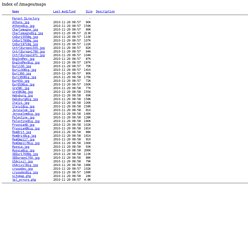
Industrial Towns and Cities. With the invention of the steam-engine, factories no longer had to be built by the side of fast-flowing rivers.
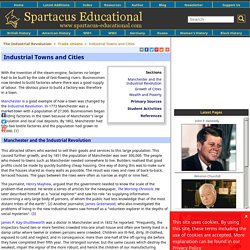
Businessmen now tended to build factories where there was a good supply of labour. The obvious place to build a factory was therefore in a town. Manchester is a good example of how a town was changed by the Industrial Revolution. In 1773 Manchester was a market-town with a population of 27,000. Businessmen began building factories in the town because of Manchester's large population and local coal deposits.
This attracted others who wanted to sell their goods and services to this large population. Why the Industrial Revolution Started in Great Britain. Industrial Revolution Comic Storyboard by shawn75938. Industrial Towns and Cities. 2. la revolució industrial 1 BAT. LA REVOLUCIÓ INDUSTRIAL. La pàgina de la Història. Concepte i cronologia Una revolució és una renovació profunda, relativament ràpida i, per tant, impactant.

És un canvi pregon, global i dràstic de les institucions polítiques i socials o de les estructures econòmiques d’una societat. La revolució industrial es va donar a Anglaterra i a Escòcia a la segona meitat del segle XVIII i es pot allargar, amb diverses fases, fins a l’esclat de la Segona Guerra Mundial. D’aquestes fases, la que ens interessa és la de 1750-1850. Revolució Industrial- Sapiens.cat. Fins al segle XVIII, les manufactures s’elaboraven en petits tallers artesans que es concentraven a les ciutats.

Els artesans feien la feina manualment: no usaven màquines i només s’ajudaven amb algunes eines. Educational Images. British Empire Classical Curriculum — Heritage History — Revision 2. British Empire Classical Curriculum — Heritage History — Revision 2. British America Canada:—Acquired in 1759 following the French-Indian Wars.
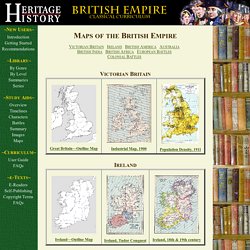
04 The Industrial Revolution - mr.bevan. The Industrial Revolution During this unit we will study the following content:What conditions stimulated the Industrial Revolution.Why did Britain become the first industrialized country and how it spread to other parts of the world.
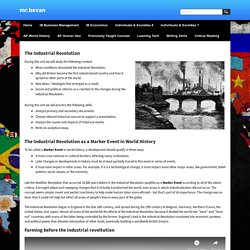
New ideas / ideologies that emerged as a result.Social and political reforms as a reaction to the changes during the Industrial Revolution.During this unit we will practice the following skills:Analyze primary and secondary documents.Choose relevant historical sources to support a presentation.Analyze the causes and impacts of historical events.Write an analytical essay. Locate the places where iron and textile industries are mainly concentrated in England. INDUSTRIALIZATION: ù Industrialization is the process of developing industries that use machines to produce goods. ù Industrial Revolution is the process.
The Industrial Revolution. In this article Matthew White explores the industrial revolution which changed the landscape and infrastructure of Britain forever. The 18th century saw the emergence of the ‘Industrial Revolution’, the great age of steam, canals and factories that changed the face of the British economy forever. Early industry Early 18th century British industries were generally small scale and relatively unsophisticated. Most textile production, for example, was centred on small workshops or in the homes of spinners, weavers and dyers: a literal ‘cottage industry’ that involved thousands of individual manufacturers. Such small-scale production was also a feature of most other industries, with different regions specialising in different products: metal production in the Midlands, for example, and coal mining in the North-East.
New techniques and technologies in agriculture paved the wave for change. Steam and coal. Untitled Document. Now that we have looked at how and why the Industrial Revolution occurred, it’s time to consider its effects on people.
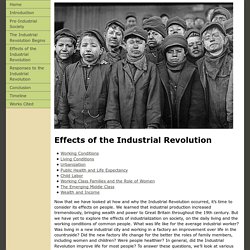
We learned that industrial production increased tremendously, bringing wealth and power to Great Britain throughout the 19th century. But we have yet to explore the effects of industrialization on society, on the daily living and the working conditions of common people. What was life like for the average industrial worker? Industrial Modernization. Industrial Modernization, or Industrial Revolutions = Prelude, Three Phases and a Taxonomy © 2010 KIMBALL FILES Phases = 0.

Prelude, "Agricultural revolution" or transformation of pre-modern village life. An Interactive Experience - World Population. Crash Course World History: The Industrial Revolution. Recursos de historia económica, social y política. Recursos de historia económica, social y política. La revolución demográfica en Inglaterra « Andalán.es. BBC - History - British History in depth: Agricultural Revolution in England 1500 - 1850. Cotton plantation clipart black and white collection. Steam engine James Watt. Educar des de la responsabilitat. PDFS. ThemesAfrica before the Transatlantic Slave Trade Atlantic Crossing The Campaign for AbolitionDiasporaEmancipationEurope before Transatlantic SlaveryLegaciesPlantation LifeResistance and Rebellion Trade and Commerce.
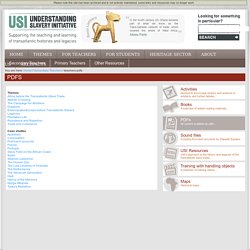
Plantation Life. Plantations had been used with great effect long before the Europeans settled in the Americas.
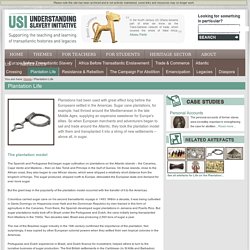
Sugar cane plantations, for example, had thrived around the Mediterranean in the late Middle Ages, supplying an expensive sweetener for Europe's élites. So when European merchants and adventurers began to sail and trade around the Atlantic, they took the plantation model with them and transplanted it into a string of new settlements – above all, in sugar. The plantation model The Spanish and Portuguese first began sugar cultivation on plantations on the Atlantic islands – the Canaries, Cape Verde and Madeira – then on São Tomé and Principe in the Gulf of Guinea. On those islands, close to the African coast, they also began to use African slaves, which were shipped a relatively short distance from the kingdom of Kongo. But the giant leap in the popularity of the plantation model occurred with the transfer of it to the Americas.
The demand for slave labour. La Vida en las Plantaciones (Español) Esclavitud: 500 anys del negoci infame. Tan antic com la humanitat, l'esclavatge de persones compleix ara cinc segles com a gran indústria, amb el primer vaixell que va salpar d'un port africà cap a Amèrica, autoritzat pel rei espanyol Carles I. La pràctica s'ha transformat i continua viva al món El tràfic d’africans cap al Nou Món suposa l’episodi migratori forçat més gran de la història, amb més de 12,5 milions de persones que van haver de deixar casa, llengua, cultura i família –tot i que la gran base de dades només n’ha documentat 10,5 milions, el 80%–.
Slavery myths: Seven lies, half-truths, and irrelevancies people trot out about slavery—debunked. (3) A year of ships. Revolución industrial. Algodón, la geopolítica del oro blanco. De las plantaciones sureñas de EE. UU. al Mánchester industrial, pasando por Asia central, India y Australia, no hay artículo que dé empleo a tanta gente como el algodón. El valor añadido generado entre el agricultor y el cliente es sangre de vida para muchas comunidades, pero también mancha de injusticia las manos de empresas y Gobiernos. En los albores de la Historia, cuando la escritura estaba en pañales, las civilizaciones del Indo, Mesoamérica y los Andes ya habían domesticado el algodón para aprovechar las mullidas fibras blancas que crecen en torno a sus semillas. Tras cardarlas e hilarlas, confeccionaban lujosas prendas para la exportación, puntal de su prosperidad económica.
En el área andina aprendieron a hilar antes incluso que a cultivar maíz o dominar la cerámica. Desde entonces, el algodón ha devenido el cultivo no alimentario más importante del planeta.